’21 Honoree Sharon Davis Gratto

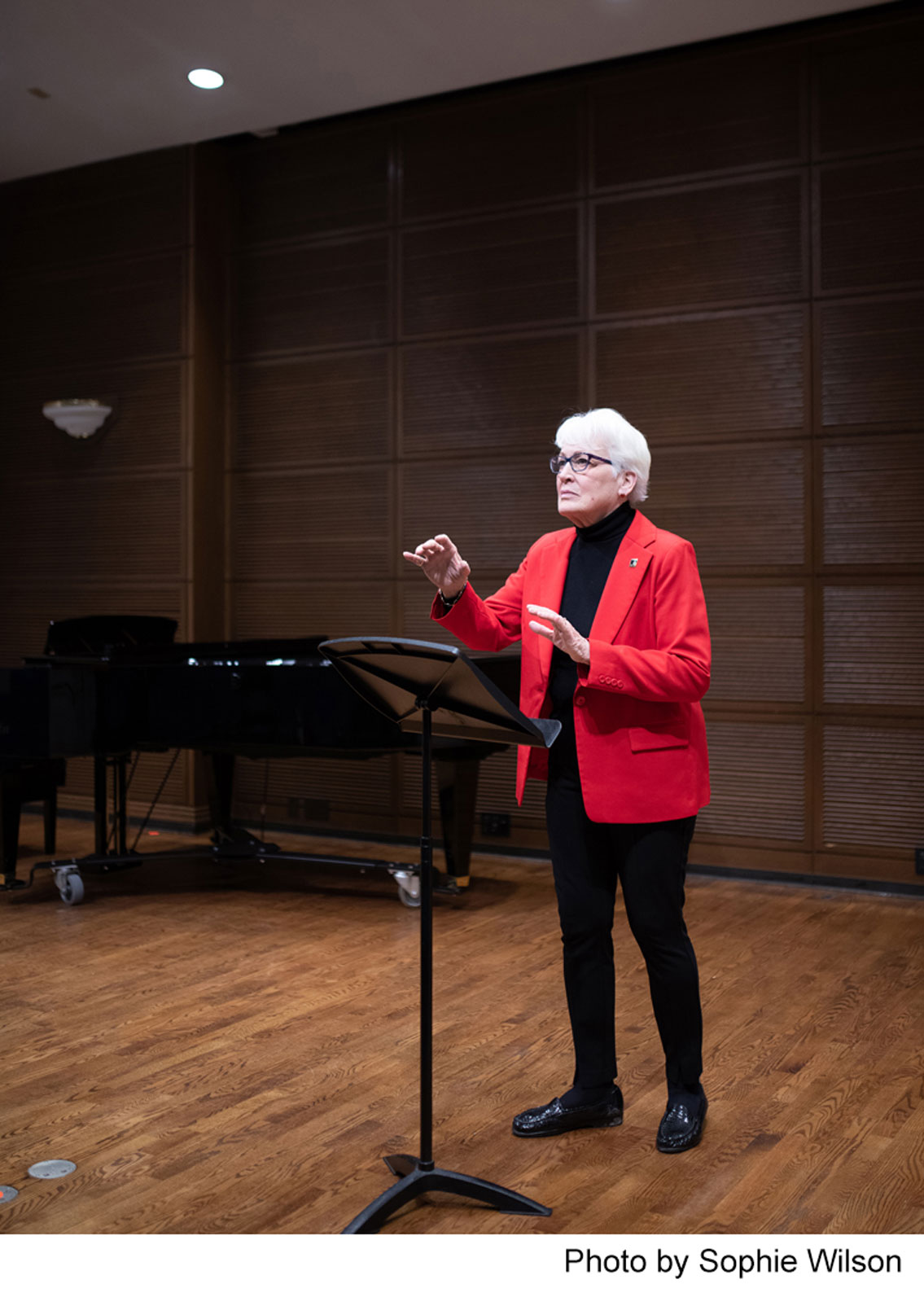
“I remember distinctly the atmosphere of panic. Everybody had to get off campus and it had quite a dramatic impact. Students left in a hurry. They left things behind. Some of my choral ensemble left without their music as we went on to work virtually for the rest of the semester, so they didn’t have any music at home with them. The shutdown occurred at the end of a residency that I had sponsored in my Graul Chair position by the Fifth House Ensemble. They were visiting from Chicago, and were just about to give a concert on their final night when we got the announcement that the University of Dayton would be shut down the next day. This was a huge problem because the next day the ensemble was to do some work in the ‘Q the Music’ program at Ruskin Elementary School in East Dayton. The students were panicked: the students in attendance; the students working in Sears Recital Hall; the Ensemble. And I was worried about what we were going to do the next day. We had students who were supposed to have private coachings with some of the musicians. But, I also remember that everyone thought this would not last very long.”

“I remember distinctly the atmosphere of panic. Everybody had to get off campus and it had quite a dramatic impact. Students left in a hurry. They left things behind. Some of my choral ensemble left without their music as we went on to work virtually for the rest of the semester, so they didn’t have any music at home with them. The shutdown occurred at the end of a residency that I had sponsored in my Graul Chair position by the Fifth House Ensemble. They were visiting from Chicago, and were just about to give a concert on their final night when we got the announcement that the University of Dayton would be shut down the next day. This was a huge problem because the next day the ensemble was to do some work in the ‘Q the Music’ program at Ruskin Elementary School in East Dayton. The students were panicked: the students in attendance; the students working in Sears Recital Hall; the Ensemble. And I was worried about what we were going to do the next day. We had students who were supposed to have private coachings with some of the musicians. But, I also remember that everyone thought this would not last very long.”
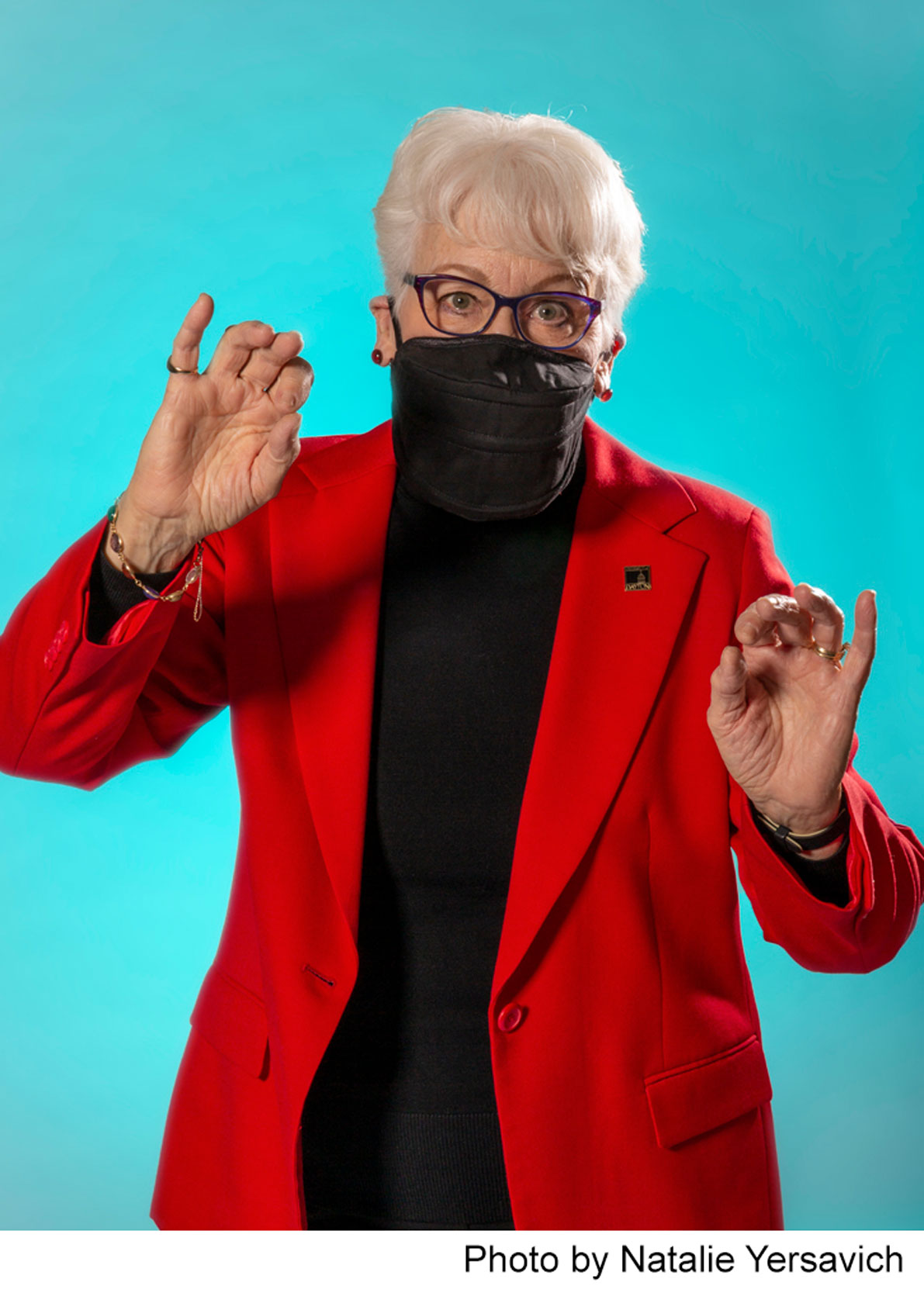
“That, to me, has been the most challenging part of this experience: how long it has gone on. Every time you think about something that could happen after all, it doesn’t happen. My husband and I were scheduled to take a Danube River cruise during Spring Break; I had several conferences to go to; I was also scheduled to meet a choral colleague from Maryland to attend an international choral symposium in New Zealand in July. And it just went on and on. Things were continuing to be canceled, one after another, until there was just a terrible level of frustration as we discovered, ‘No, these things are not going to return. They are not going to happen again.’ It wasn’t all going to come to a stop, and we couldn’t resume life as normal. It just wasn’t going to happen. So, those of us who teach arts in higher education have been communicating since this started, to find out what other people are doing, and there’s been a lot of interaction on that level, both for instrumental teachers and the vocal and choral teachers.”

“That, to me, has been the most challenging part of this experience: how long it has gone on. Every time you think about something that could happen after all, it doesn’t happen. My husband and I were scheduled to take a Danube River cruise during Spring Break; I had several conferences to go to; I was also scheduled to meet a choral colleague from Maryland to attend an international choral symposium in New Zealand in July. And it just went on and on. Things were continuing to be canceled, one after another, until there was just a terrible level of frustration as we discovered, ‘No, these things are not going to return. They are not going to happen again.’ It wasn’t all going to come to a stop, and we couldn’t resume life as normal. It just wasn’t going to happen. So, those of us who teach arts in higher education have been communicating since this started, to find out what other people are doing, and there’s been a lot of interaction on that level, both for instrumental teachers and the vocal and choral teachers.”
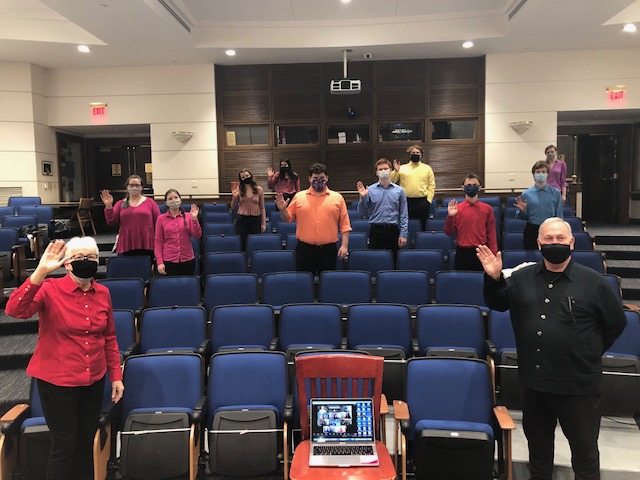
“All of our UD voice faculty have had to teach voice lessons online. We rehearsed choral ensembles outside as soon as the weather got warmer in a huge rented tent because of the limited capacities of our indoor spaces. In the choir room, for example, you can only have seven singers plus the conductor plus the pianist. And if you have a group of 22, what do you do? You have to teach them in shifts. And then you have to clear the air in the room before the next group can come in. So these issues present challenges.”

“All of our UD voice faculty have had to teach voice lessons online. We rehearsed choral ensembles outside as soon as the weather got warmer in a huge rented tent because of the limited capacities of our indoor spaces. In the choir room, for example, you can only have seven singers plus the conductor plus the pianist. And if you have a group of 22, what do you do? You have to teach them in shifts. And then you have to clear the air in the room before the next group can come in. So these issues present challenges.”
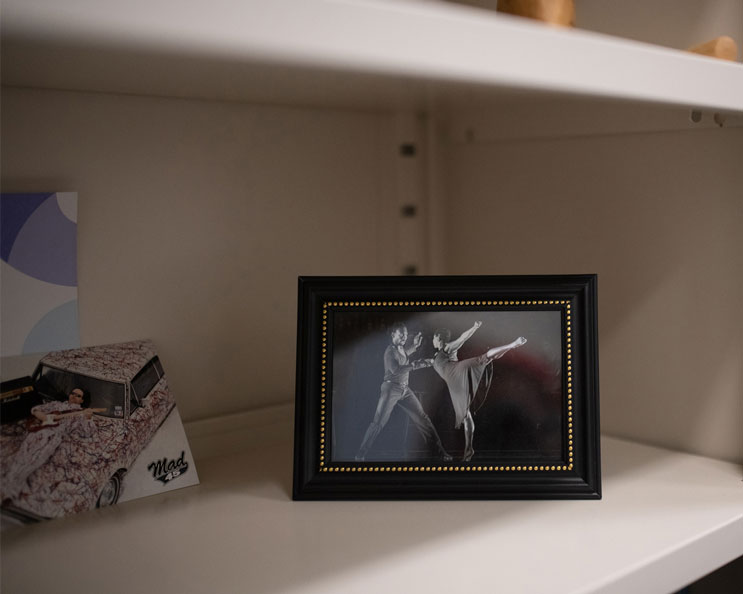
“I serve on the board of Dayton Contemporary Dance Company, and I’m a founding trustee of the Dayton Performing Arts Alliance, which represents an administrative merger of the ballet, the opera, and the orchestra that took place several years ago. I have watched these artists flounder and struggle to make art and to keep their income. Many of these people are per-service employees, so if the service doesn’t happen, they don’t make money. Worst of all, they cannot share their art. I know from friends that the arts in other cities are all struggling, but they’re being imaginative and creative.”

“I serve on the board of Dayton Contemporary Dance Company, and I’m a founding trustee of the Dayton Performing Arts Alliance, which represents an administrative merger of the ballet, the opera, and the orchestra that took place several years ago. I have watched these artists flounder and struggle to make art and to keep their income. Many of these people are per-service employees, so if the service doesn’t happen, they don’t make money. Worst of all, they cannot share their art. I know from friends that the arts in other cities are all struggling, but they’re being imaginative and creative.”
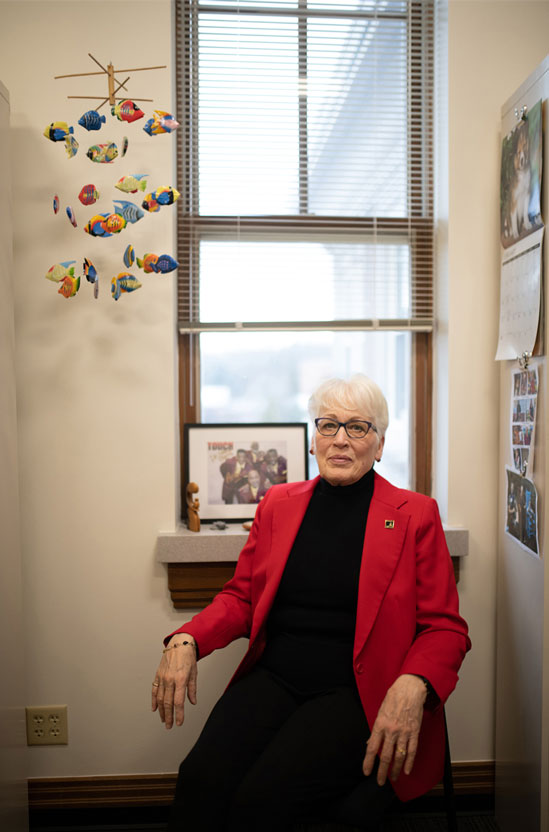
“The Fifth House Ensemble that was in residence here when things closed down has increased its work with underserved populations in Chicago, perhaps ten-fold, and has created a huge business with online workshops. I’ve seen lots of things happen like that. The Metropolitan Opera, the Chicago Lyric Opera, all of these companies have put together special online performances that you can buy a ticket for, and it’s a bargain. For $25, even to sit in your own home, to watch leading stars do this music, well, it’s not the same as being in person, of course, but it’s still good, and a way for the musicians to connect with their audiences. I also, parenthetically, have found that I’m not really excited about listening to music online. People send me a link or share a Facebook post, ‘This music will make you feel good,’ and all that, but it doesn’t. And it’s not helping me at all. I have supported some online music performance as a donor because I know the arts need it. I’ve donated all of my subscription tickets to the Dayton Performing Arts Alliance and to the Dayton Contemporary Dance Company. Helping in those ways has been fine, and by doing that I am encouraging others to join in on the live stream performances.”

“The Fifth House Ensemble that was in residence here when things closed down has increased its work with underserved populations in Chicago, perhaps ten-fold, and has created a huge business with online workshops. I’ve seen lots of things happen like that. The Metropolitan Opera, the Chicago Lyric Opera, all of these companies have put together special online performances that you can buy a ticket for, and it’s a bargain. For $25, even to sit in your own home, to watch leading stars do this music, well, it’s not the same as being in person, of course, but it’s still good, and a way for the musicians to connect with their audiences. I also, parenthetically, have found that I’m not really excited about listening to music online. People send me a link or share a Facebook post, ‘This music will make you feel good,’ and all that, but it doesn’t. And it’s not helping me at all. I have supported some online music performance as a donor because I know the arts need it. I’ve donated all of my subscription tickets to the Dayton Performing Arts Alliance and to the Dayton Contemporary Dance Company. Helping in those ways has been fine, and by doing that I am encouraging others to join in on the live stream performances.”
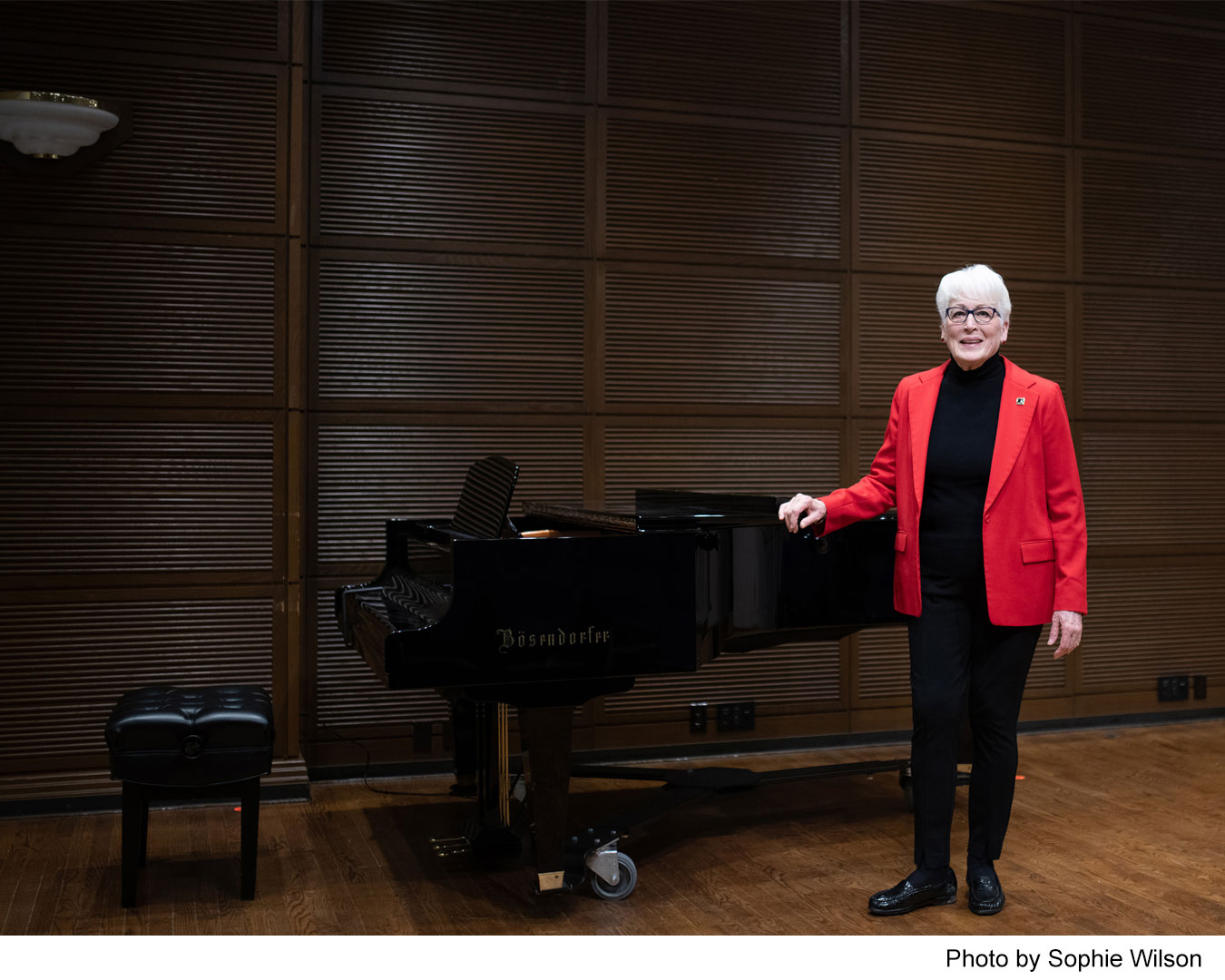
“But hearing music this way is not making it for me. It’s much better live. This ‘adapting’ via technology has taken place, but it has not been easy. Some of my colleagues are much better at technology than most of us. The kind of technology you need to take one piece of choral music and create a virtual recording out of it, editing individual recordings that come out in little squares on the screen can take 25 to 30 hours – for one piece of music that lasts three or four minutes! Who has that kind of time? It’s just impossible. So that was the very first thing we had to do – convince the administration to pay for us to have tech support, which they did.”

“But hearing music this way is not making it for me. It’s much better live. This ‘adapting’ via technology has taken place, but it has not been easy. Some of my colleagues are much better at technology than most of us. The kind of technology you need to take one piece of choral music and create a virtual recording out of it, editing individual recordings that come out in little squares on the screen can take 25 to 30 hours – for one piece of music that lasts three or four minutes! Who has that kind of time? It’s just impossible. So that was the very first thing we had to do – convince the administration to pay for us to have tech support, which they did.”

“We required a lot more equipment. I have two bags of equipment here that I use – some for the tent and some for when we’re in other locations. I have a microphone, a camera stand – all of these things that I never knew how to use before.”

“We required a lot more equipment. I have two bags of equipment here that I use – some for the tent and some for when we’re in other locations. I have a microphone, a camera stand – all of these things that I never knew how to use before.”
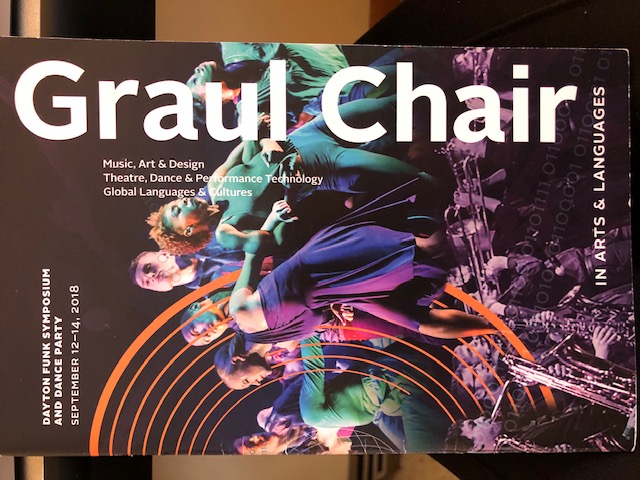
“COVID also has challenged my role as the Graul Endowed Chair in Arts and Languages. I have had to reschedule the 2nd Dayton Funk Symposium that I am hosting two times, most recently until the first week in November of this year. I received a $10,000 grant from Culture Works for this project because it is an event with a goal to connect UD to the African American community in Dayton and to include the Dayton Philharmonic Orchestra. This project is best done in person, not on Zoom. I have always been teaching music in any way, shape or form that I can. I believe in music education and I believe in arts education to really, really develop the creative skills of youth. And also to develop our humanity. I want to go to some of these hearings in the Senate and interrupt them and say, ‘Could you all stop and sing a song for a minute? Could you try it? Could you improve this situation by doing something else? Just for five minutes, something that is human.’ That's what is in my heart.”

“COVID also has challenged my role as the Graul Endowed Chair in Arts and Languages. I have had to reschedule the 2nd Dayton Funk Symposium that I am hosting two times, most recently until the first week in November of this year. I received a $10,000 grant from Culture Works for this project because it is an event with a goal to connect UD to the African American community in Dayton and to include the Dayton Philharmonic Orchestra. This project is best done in person, not on Zoom. I have always been teaching music in any way, shape or form that I can. I believe in music education and I believe in arts education to really, really develop the creative skills of youth. And also to develop our humanity. I want to go to some of these hearings in the Senate and interrupt them and say, ‘Could you all stop and sing a song for a minute? Could you try it? Could you improve this situation by doing something else? Just for five minutes, something that is human.’ That's what is in my heart.”
